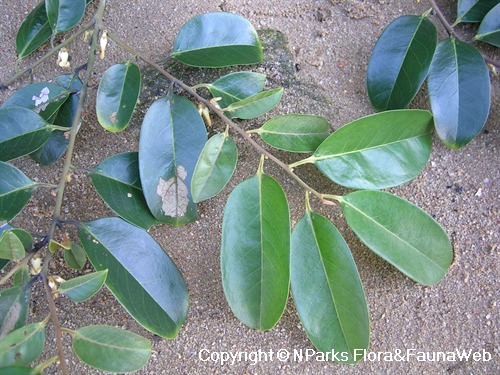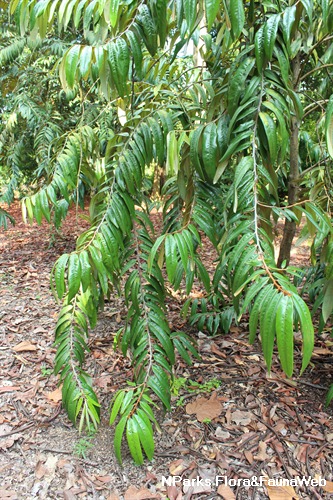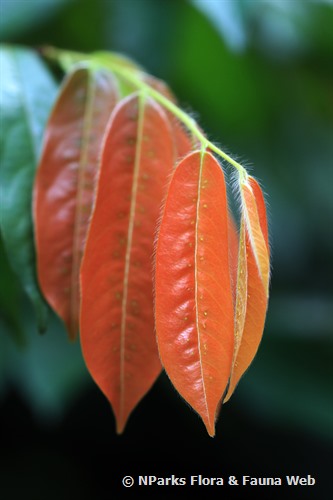
Name
Classifications and Characteristics
| Plant Division | Angiosperms (Flowering Seed Plants) |
|---|---|
| Plant Growth Form | Tree |
| Lifespan (in Singapore) | Perennial |
| Mode of Nutrition | Autotrophic |
| Maximum Height | 21 m |
Biogeography
| Native Distribution | Endemic to Peninsular Malaysia |
|---|---|
| Native Habitat | Terrestrial |
| Preferred Climate Zone | Tropical |
| Local Conservation Status | Non-native (Horticultural / Cultivated Only) |
Description and Ethnobotany
| Growth Form | It is a tree, up to 21 m tall. |
|---|---|
| Foliage | Leaves are oblong-obovate (6 – 13 cm long and 1.5 – 2.8 cm wide) with hairy mid rib. There are 6 – 9 pairs of secondary veins, and tertiary veins is ladder like. Leaf stalk is short (0.2 – 0.3 cm long). Apex is acuminate and leaf base is bluntly pointed to rounded. |
| Flowers | Male inflorescence is few flowered and developing from scaly buds in axils of leaf scars. Male flower is small (0.4 – 0.9 cm long) with salverform corolla, and 21 stamens where all the filaments are basally fused into a tube. Female inflorescence and flowers are unknown. |
| Fruit | Fruit is round (about 3 cm diameter) and densely hairy when young, with 4 persistent reflexed hairy sepals. Fruit is 4 seeded, and each seed is surrounded by translucent pulp with ruminate endosperm. |
| Habitat | Lowland and hill forest of Trengganu. |
| Etymology | Greek Diospyros, means divine food, - alluding to the edible fruit. Species epithet means of Trengganu, a state in Peninsular Malaysia. |
Landscaping Features
| Landscape Uses | Parks & Gardens |
|---|
Plant Care and Propagation
| Light Preference | Full Sun |
|---|---|
| Water Preference | Moderate Water |
| Plant Growth Rate | Moderate |
Image Repository
Others
| Master ID | 33462 |
|---|---|
| Species ID | 7876 |
| Flora Disclaimer | The information in this website has been compiled from reliable sources, such as reference works on medicinal plants. It is not a substitute for medical advice or treatment and NParks does not purport to provide any medical advice. Readers should always consult his/her physician before using or consuming a plant for medicinal purposes. |

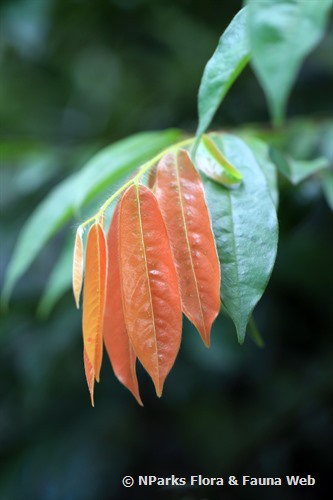

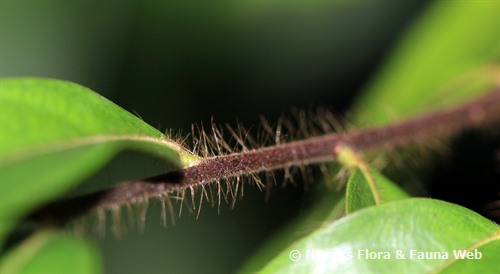
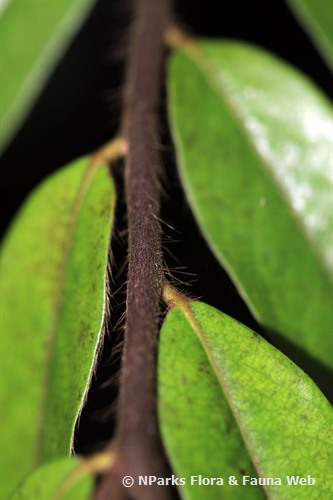
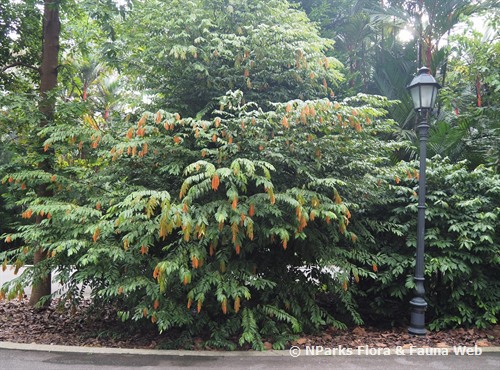
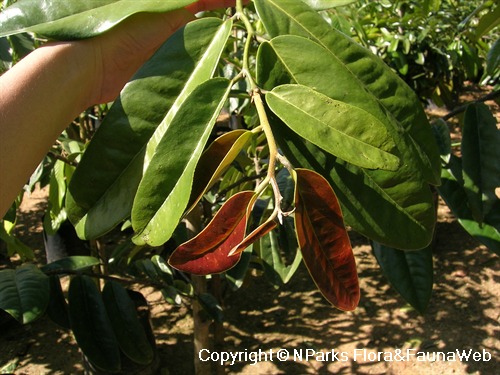
_lowres.jpg)
